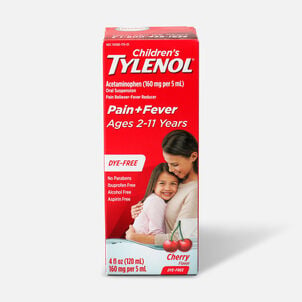We're committed to helping readers understand their benefits and the potential of tax-free health care accounts. But, before you can do any of that you have to understand the “language" of health care. A little knowledge can go a long way toward helping you make sense of it all — so you can make smart decisions that will benefit you and your family today and for years to come. To simplify things, we've put together the top terms you'll need to know to understand your health benefits.

Annual Limit
An insurance plan may limit the dollar amount it will pay during one year for a certain treatment or service, or for all benefits provided in a year.
Benefit / Benefit Level
These two terms are usually confused, but there's a clear difference. A benefit is the amount the insurance company pays on your behalf. A benefit level is how much the insurance company is willing to pay for a specific service.
Claim
Simply put, a "claim," as it relates to health insurance, is a request for insurance coverage. "Claims" for health insurance plans are typically submitted automatically to an insurance carrier when a qualified medical service has been performed. Today, most FSA plans utilize cards that automatically approve purchases when you buy them. If you don’t have one of these cards, you will have to submit a claim to your benefits administrator for reimbursement. Although HSAs do not have a claims requirement, HSA users should hold onto their receipts to prove to the IRS that their purchases were for qualified medical expenses.
COBRA
This stands for Consolidated Omnibus Budget Reconciliation Act of 1985. This federal act requires group health plans to allow employees and covered dependents to continue their group coverage for a stated period of time following a qualifying event that causes the loss of group health coverage. Qualifying events include reduced work hours, termination of employment, a child becoming an over-aged dependent, Medicare eligibility, death, or divorce of a covered employee, among others.
Coinsurance
Coinsurance is a cost-sharing arrangement in which the plan holder will pay a percentage of the costs of a medical service, often after a deductible has been met. As an example, if an individual's insurance plan offers a 70/30 split for medical expenses after the deductible is met, an expenditure of $100 would mean that the insurance company would pay $70, while the account holder pays $30.
Depending on the structure of the health care plan, coinsurance percentages may also vary if a patient goes outside of their physician network.
Consumer Directed Health Plan (CDHP)
A health plan with a health savings account (HSA) or other tax-advantaged account. Consumer directed health plans give members more control of health care expenses, as the deductible is higher and care is paid for with the health savings account.
Copayments
Many health plans will offer a type of cost-sharing arrangement called a co-payment where the plan holder will pay a fixed portion of the overall cost of the health care service. In the case of copayments, these are flat amounts (not percentages like coinsurance) that are paid for a health care service.
Deductible
An insurance plan's deductible is the amount that a plan holder must pay out-of-pocket before the insurance company will begin to pay its portion. For instance, if you are enrolled in a plan with a $1,500 deductible, you will have to pay for your medical expenses in full until you meet the $1,500 threshold. At that point the health insurance plan will begin its coverage.
Dependent
A dependent is any person that you list on your health plan, including children, a spouse or an adult relative that is covered by the primary insured member's plan.
Explanation of benefits
An explanation of benefits is the fine print that dictates how a medical claim is paid. It's usually received by the plan member following a qualified medical service or expense and contains detailed information about the total cost of the service, what the health plan paid and what portion of the costs the plan holders are responsible for, including any remaining copay, coinsurance or deductible amounts.
Health Maintenance Organization (HMO)
A type of health plan that provides health care coverage to its members through a network of doctors, hospitals, and other health care providers. An HMO may cost less than other plans but has some limitations.
Health Savings Account
With a Health Savings Account, or HSA, you set aside money before taxes. When you visit a doctor or go to a hospital, you can pay for qualified expenses from your HSA. Only certain plans meet the high deductible amounts needed for you to be able to use your HSA.
In-Network
Services provided by a physician or other health care provider with a contractual agreement with the insurance company and covered at a higher benefit level.
Lifetime Limit
A cap on the total benefits you may get from your insurance company over the life of your plan for certain conditions. A health plan may have a total lifetime dollar limit on benefits (like a $1 million lifetime cap) or limits on specific benefits (like one gastric bypass per lifetime), or a combination of the two. After a lifetime limit is reached, the health plan will no longer pay for covered services. There are no lifetime limits on essential health benefits, such as emergency services and hospital stays.
Premium
Health insurance premiums are the regular amounts paid to an insurance company to be considered “covered" under a health insurance plan. These amounts can be paid out biweekly, monthly, quarterly or annually.
Out-of-network provider
Every insurance plan contracts with a network of doctors, hospitals, and other health care providers to provide medical services at discounted rate to its members. On the other hand, out-of-network providers are those medical providers that fall outside the insurance plan's network of preferred providers. So, their services will typically cost more than those in the plan network.
Open Enrollment Period
The period of time set up to allow you to enroll in a health plan, usually once a year.
Out-of-pocket maximum
The out-of-pocket maximum is the most a person will pay toward their health insurance over the course of a year and is usually a combination of deductibles, copayments and coinsurance. Once you have spent your out-of-pocket maximum, the insurance company will pay 100% of all covered health expenses for the rest of the year.
Participating Provider Option (PPO)
A health plan that supplies services at a higher level of benefits when members use contracted health care providers. PPOs also provide coverage for services rendered by health care providers who are not part of the PPO network; however, the plan member generally shares a greater portion of the cost for such services.
Pharmacy Benefit Manager (PBM)
A separate, or third-party, company that handles your health plan’s pharmacy benefit. A PBM processes and pays for your prescription drug claims based on the terms of your pharmacy benefit.
Premium
The ongoing amount that must be paid for your health plan. You and/or your employer usually pay it monthly, quarterly or yearly. The premium may not be the only amount you pay for insurance coverage. Typically, you will also have a copay or deductible amount.
Premium Tax Credit
Based on your family size and income, you may qualify for a tax credit. Unlike tax credits you claim when you file your taxes, these tax credits can be used right away to lower your monthly premium costs. Sometimes called an advanced premium tax credit (APTC), or tax credit.
Prior Authorization
The process by which a plan member or their doctor gets approval from their health plan before the member undergoes a course of care, such as a hospital admission or a complex diagnostic test. Also called preauthorization.
Rider
A rider is a legal term that refers to an additional condition added to a contract. In the health insurance world, a rider usually refers to an additional level of coverage that is added to a health insurance plan and paid for with an additional premium. One example of this is a maternity rider, which provides additional pregnancy coverage that standard plans may not completely cover.
Of course, there's a lot of other terms to know. But these definitions should get the ball rolling for a bigger discussion with your insurance provider or FSA administrator.
Special Enrollment Period
A time outside the open enrollment period during which you can sign up for health insurance. You generally qualify for a special enrollment period of 60 days following certain life events that change your family status (for example, marriage or birth of a child) or loss of other health coverage.
-
Thank you for visiting the FSA Store Learning Center. Don’t forget to follow us for more helpful tips on Facebook, Instagram, and Twitter.


















